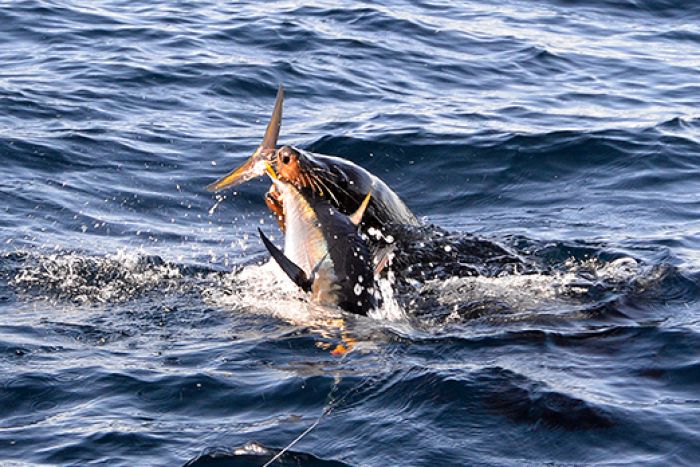More seals damaging gear and catches? 98% of commercial and 85% of recreational fishers feel that seal numbers were increasing, and that interactions had increased due to increasing seal numbers. However, it seems more likely seals have just become habituated to fishing, so interactions with fishers are changing.

Population survey data show that the Australian fur seal population increased from the late 1980s to the early 2000s after near extinction by sealing. But from the early 2000s, pup production (how fur seal populations are measured) has stabilised, although some small new colonies have been established at the edge of the *species’ range.
In 2013, the whole-population census (TAS and VIC) recorded the first decrease in annual pup production since species-wide protection was given in 1975. And while the long-nosed fur seal is increasing in Tasmania, it is doing so from a low population level.
IMAS Honours researcher Cloe Cummings did a 2016 survey of fishers, environmental managers, and the general public. In general, most fishers believed controlled population culls would be the most effective, followed by targeted removal of problem individuals.
The public and managers were more likely to support non-lethal techniques, especially modifying fishing gear and practices to minimise interactions. Members of the public emphasised an ecosystem approach, education, and transparency as important dimensions of management.
While fishing communities around the world sometimes advocate seal culling to address fisheries-seal interactions, there is a lack of evidence to support this as an effective management strategy.
A combination of further research, reducing fish rewards from humans to seals (e.g. fishing discards, direct feeding, bycatch), and investment in technical mitigation methods for specific fisheries, represent the most promising current strategies to understand and reduce fisheries-seals interactions.
